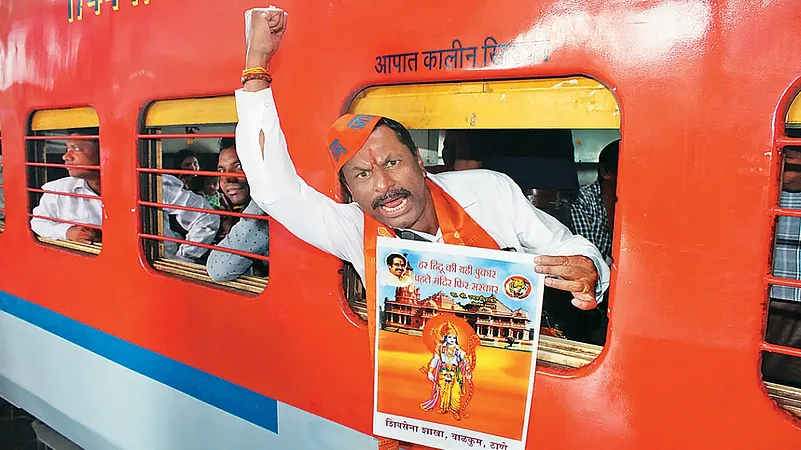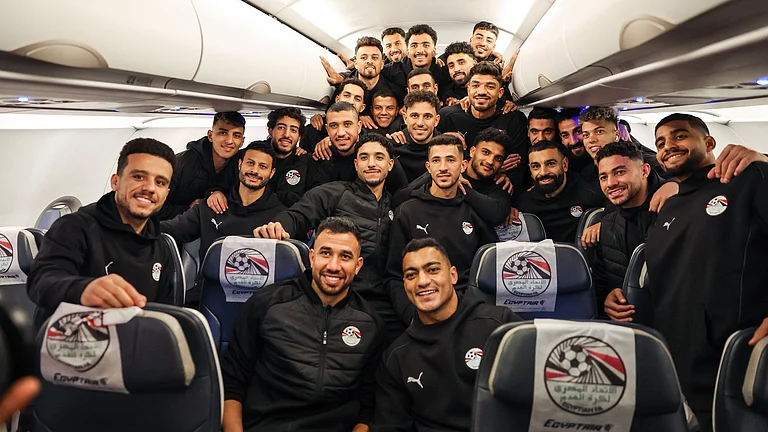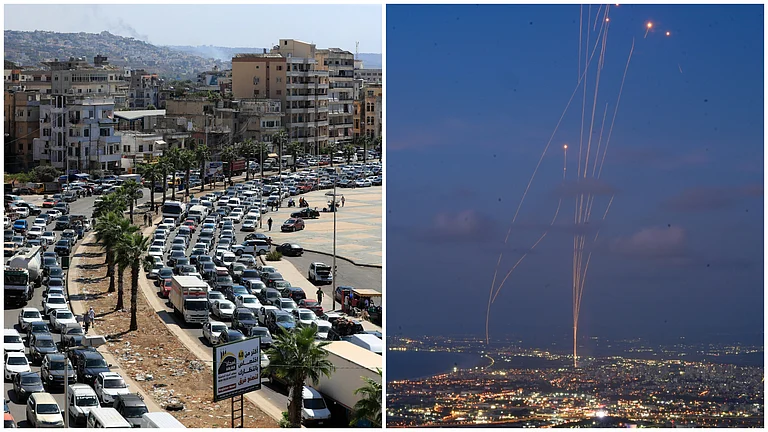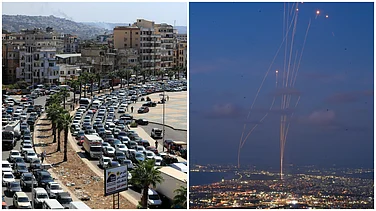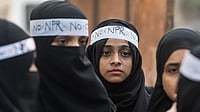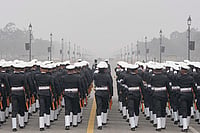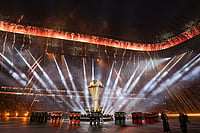In the 16th century, Sant Eknath Maharaj, a popular Bhakti poet in Maharashtra, wrote about his interaction with Tulsidas in Kashi (Varanasi). During their meetings, Tulsidas, the writer of Ramcharitmanas, the Awadhi version of the Sanskrit epic Ramayana, spoke extensively about the Hindu god Ram and his life.
Influenced by it, Sant Eknath wrote about all he had heard. Later, this narration in Marathi came to be known as the Eknath Ramayan or the Bhavarth Ramayan. Based on Tulsidas’s narrative, this version found credence among the people. “According to the Valmiki Ramayana, Ram entered modern Maharashtra in Panchavati. It is the Eknath Ramayan that popularised the epic among the people,” says Utkarsh Patel of the comparative mythology department at the University of Mumbai, who also writes mythological fiction. “Eknath was a well-known Bhakti poet,” says Patel. “This was his last work. It’s believed he did not complete it. It was finished by one of his students.”
In the 16th century, various versions of the epic were written all over India. “Akbar started the translation of the Ramayana into Persian. Kabir had started talking about Ram-Rahim. There were many translations of the Ramayana taking place and many versions came out,” says Patel. “This was when the Eknath Ramayan became popular. As it was based directly on Eknath’s memory of Tulsidas’s version, it got more credence.”
ALSO READ: Who Is Ram And What Is His Story?
Soon, the story of Ram, interspersed with local folklore, caught the attention of the people. “The Bhavarth Ramayan says Ram paid obeisance to the local deity Tulja Bhavani, lending it a local feel. This kind of assimilation is common. This is a confluence of two different streams, which often happens in mythology,” says Patel.
The Eknath Ramayan mentions the trials of Ram, Sita and Lakshman in Maharashtra. It refers to Panchavati near modern-day Nashik in central Maharashtra as the place where Ram built his home during his exile. Located on the left bank of the Godavari, Panchavati attracts scores of devotees to its famed temples—the Panchamukhi Hanuman temple and the Kalaram temple.
Nashik derives its name from the Sanskrit word nasika, meaning nose. It is here that Lakshman supposedly cut off the nose of Surpanakha, the younger sister of Ravan, the demon king who kidnapped Sita. According to Pratham Joshi Guruji, a priest living in Nashik, Surpanakha fell in love with Ram and tried to lure him. When he did not respond, she tried to lure Lakshman, but that too failed. Jealous of Sita, she tried to harm her, when Lakshman cut off her nose with his sword, he says.
ALSO READ: Who Is Ram? Defining The Enigma
“It is in Panchavati that Lakshmanji drew the Lakshmanrekha to keep Sitaji safe. It is also here that Ravan abducted Sitaji,” he tells Outlook.
Despite Eknath Ramayan’s popularity, Ram worship in the state is confined to Ram Navami, says Nirmala Kulkarni, a researcher in mythology.
“The Bhakti movement in Maharashtra popularised the worship of Vitthal and Rukmini. This gave birth to the Warkari sampraday (devotees of Vitthal). In 1894, Lokmanya Gangadhar Tilak, the freedom fighter, started the public celebration of Ganeshotsav. These are the two mega deities in Maharashtra. Ram worship is not big, nor do we have many Ram temples in Maharashtra,” says Kulkarni.
However, political parties—specifically the Shiv Sena—have tried to popularise Ram worship with their Hindutva politics. It began with founder Bal Thackeray’s involvement in the Ram Janmabhoomi movement, after his party participated in the demolition of the Babri Masjid in 1992. He introduced the slogan: “Garv se kaho, hum Hindu hai (Say with pride, we are Hindus).”
While the Shiv Sena and the BJP have used Ram and the Ram Mandir issue to whip up a political frenzy in Maharashtra, the Nationalist Congress Party (NCP) also has many Ram worshippers. NCP chief Sharad Pawar is reportedly an atheist and has been a critic of the Ayodhya temple, but the party’s state unit chief, Jayant Patil, has been vocal about offering prayers at the Ram temple in Sangli, in western Maharashtra.
Though the Ram temple issue had led to social tensions across Maharashtra at different points in time, according to Kulkarni, Ram worshippers are still not many. “Ram Navami became popular because many people worship Sai Baba, who was a Ram devotee. Since Ram Navami is celebrated on a large scale in Shirdi, Ram worship also caught on. But when compared to Vitthal and Ganesh, it’s not much,” says Kulkarni.
Now that the Ram temple is being constructed in Ayodhya, this has become a must-visit place for politicians of Maharashtra of all hues. They have made a beeline for the sacred place to seek Ram’s blessings.
When the chief of the Maharashtra Navnirman Sena (MNS), Raj Thackeray, wanted to boost his image, he planned a visit to Ayodhya. However, his past tirade against north Indians caught up with him, and the BJP in Ayodhya opposed his visit, forcing him to cancel the trip.
Then Mahant Brijmohan Das, from the Dashrath seat of Ayodhya, invited the state Congress chief, Nana Patole, to visit Ayodhya as his guest, lending political colour to the invitation.
Despite the Shiv Sena being staunch supporters of the Ram temple, in August 2020, no one from the party was invited to the bhoomi pujan of the Ram Janmabhoomi Mandir by PM Narendra Modi. In fact, Uddhav Thackeray was the first leader to visit Ayodhya after the Supreme Court verdict on November 9, 2019, that gave the go-ahead for the temple construction.
After the Thackeray-led Maha Vikas Aghadi (MVA) coalition government completed 100 days in power in Maharashtra, he visited Ayodhya and announced a donation of Rs 1 crore towards the construction of the temple. He emphasised that the contribution was his own money and not that of the government. He had first visited Ayodhya in November 2018, when his party was in power in Maharashtra in a coalition with the BJP.
In April this year, while he was still the chief minister, Uddhav had taken on the BJP for allegedly fomenting hate in the country, saying that had Lord Ram not been born, it would have no issue to raise. In June this year, just before the MVA government was brought down by rebel minister Eknath Shinde, the latter had accompanied Uddhav’s son Aaditya to Ayodhya. Shinde, who camped in Ayodhya for days, had organised the visit with much fanfare. “Ayodhya is the centre of faith in India. In 2018, the Shiv Sena had given the slogan “pehle mandir phir sarkar (first temple, then government)”. Only after that was the way for the construction of the Ram Mandir cleared. Bhagwan Shri Ram is in our hearts. We must establish Ram Rajya to serve the people better,” Aaditya, 32, had then said.
ALSO READ: Lesson On Environment From Ramayan
In December 2009, Bal Thackeray had stated that the Shiv Sena would support a Muslim as the Prime Minister of the country if the community supported the construction of the Ram temple in Ayodhya. The Shiv Sena had termed the bhoomi pujan of the Ayodhya temple as the “fulfilment of Balasaheb Thackeray’s dream”.
Despite the Shiv Sena’s vociferous support to the cause of the Ram Mandir in Ayodhya, there are not many temples devoted to Lord Rama in Maharashtra. The major temples are confined to pockets in Nashik, which is connected to the Ram trail in Maharashtra.
(This appeared in the print edition as "In the Land of Ganesh & Vitthal")






